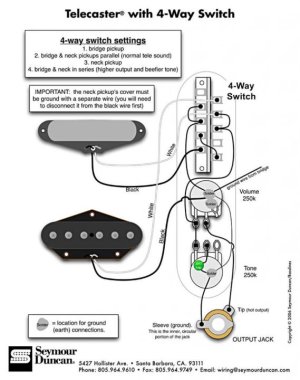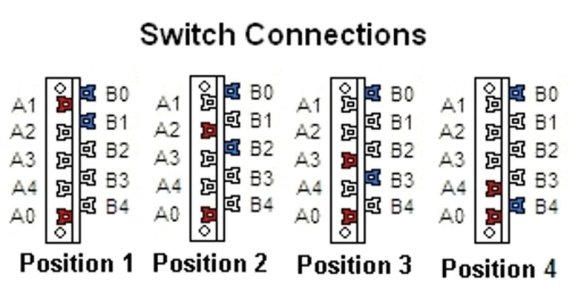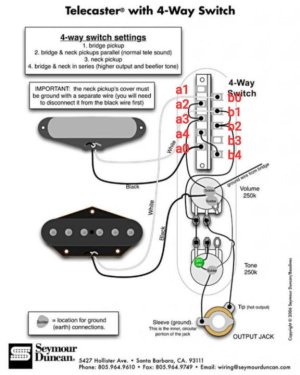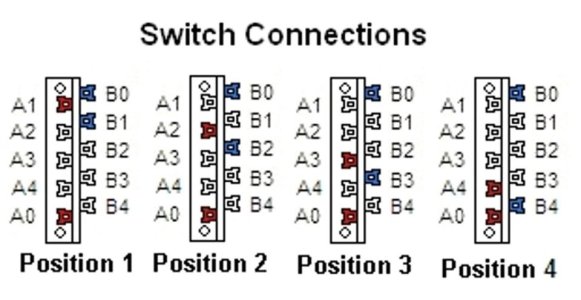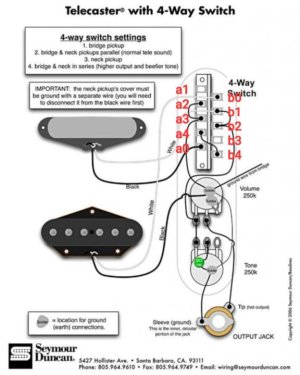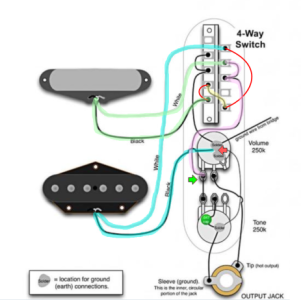My post title doesn't really say what I want. I understand parallel and series wiring. What I don't understand is how the attached 4-way blade switch wiring implements parallel and series effects.
Let me be clear - I am NOT looking for wiring diagrams. There are thousands of those that I've studied. The knowledge I'm trying to achieve is to understand how the wiring of the attached switch implements parallel and series between Telecaster pickups. In other words, given the attached wiring diagram, when the 4-way blade switch is in positions 2 and 4, which lugs are active and how is it that those active lugs can produce the parallel and series effects? I've studied and studied that diagram and I know how to wire 2 pickups outside a guitar in parallel and series, but I can't understand how those effects are achieved by the way this blade switch is wired. So if someone can explain it so a 10th grader (which I'm not) can understand it, I'd really appreciate it.
Let me be clear - I am NOT looking for wiring diagrams. There are thousands of those that I've studied. The knowledge I'm trying to achieve is to understand how the wiring of the attached switch implements parallel and series between Telecaster pickups. In other words, given the attached wiring diagram, when the 4-way blade switch is in positions 2 and 4, which lugs are active and how is it that those active lugs can produce the parallel and series effects? I've studied and studied that diagram and I know how to wire 2 pickups outside a guitar in parallel and series, but I can't understand how those effects are achieved by the way this blade switch is wired. So if someone can explain it so a 10th grader (which I'm not) can understand it, I'd really appreciate it.
Attachments
Last edited:

